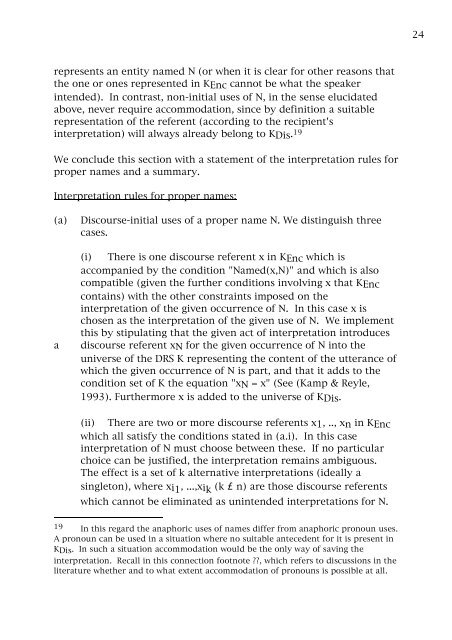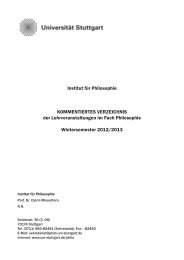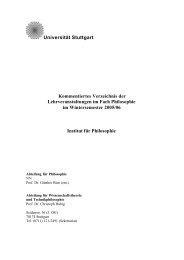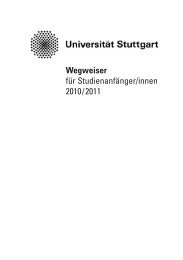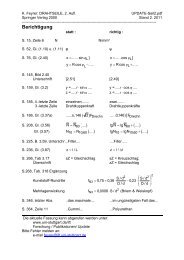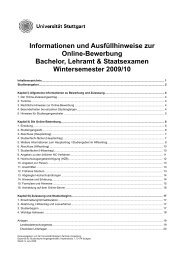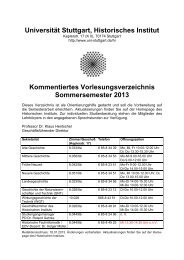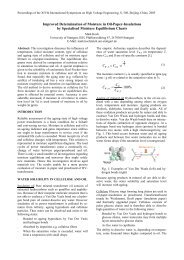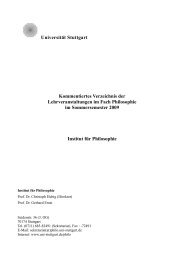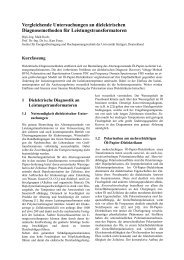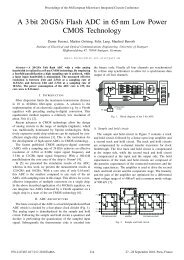Discourse Structure and the Structure of Context - Multiple Choices
Discourse Structure and the Structure of Context - Multiple Choices
Discourse Structure and the Structure of Context - Multiple Choices
Create successful ePaper yourself
Turn your PDF publications into a flip-book with our unique Google optimized e-Paper software.
24<br />
represents an entity named N (or when it is clear for o<strong>the</strong>r reasons that<br />
<strong>the</strong> one or ones represented in KEnc cannot be what <strong>the</strong> speaker<br />
intended). In contrast, non-initial uses <strong>of</strong> N, in <strong>the</strong> sense elucidated<br />
above, never require accommodation, since by definition a suitable<br />
representation <strong>of</strong> <strong>the</strong> referent (according to <strong>the</strong> recipient's<br />
interpretation) will always already belong to KDis. 19<br />
We conclude this section with a statement <strong>of</strong> <strong>the</strong> interpretation rules for<br />
proper names <strong>and</strong> a summary.<br />
Interpretation rules for proper names:<br />
(a)<br />
a<br />
<strong>Discourse</strong>-initial uses <strong>of</strong> a proper name N. We distinguish three<br />
cases.<br />
(i)<br />
There is one discourse referent x in KEnc which is<br />
accompanied by <strong>the</strong> condition "Named(x,N)" <strong>and</strong> which is also<br />
compatible (given <strong>the</strong> fur<strong>the</strong>r conditions involving x that KEnc<br />
contains) with <strong>the</strong> o<strong>the</strong>r constraints imposed on <strong>the</strong><br />
interpretation <strong>of</strong> <strong>the</strong> given occurrence <strong>of</strong> N. In this case x is<br />
chosen as <strong>the</strong> interpretation <strong>of</strong> <strong>the</strong> given use <strong>of</strong> N. We implement<br />
this by stipulating that <strong>the</strong> given act <strong>of</strong> interpretation introduces<br />
discourse referent xN for <strong>the</strong> given occurrence <strong>of</strong> N into <strong>the</strong><br />
universe <strong>of</strong> <strong>the</strong> DRS K representing <strong>the</strong> content <strong>of</strong> <strong>the</strong> utterance <strong>of</strong><br />
which <strong>the</strong> given occurrence <strong>of</strong> N is part, <strong>and</strong> that it adds to <strong>the</strong><br />
condition set <strong>of</strong> K <strong>the</strong> equation "xN = x" (See (Kamp & Reyle,<br />
1993). Fur<strong>the</strong>rmore x is added to <strong>the</strong> universe <strong>of</strong> KDis.<br />
(ii) There are two or more discourse referents x1, .., xn in KEnc<br />
which all satisfy <strong>the</strong> conditions stated in (a.i). In this case<br />
interpretation <strong>of</strong> N must choose between <strong>the</strong>se. If no particular<br />
choice can be justified, <strong>the</strong> interpretation remains ambiguous.<br />
The effect is a set <strong>of</strong> k alternative interpretations (ideally a<br />
singleton), where xi1 , ...,x ik (k £ n) are those discourse referents<br />
which cannot be eliminated as unintended interpretations for N.<br />
19 In this regard <strong>the</strong> anaphoric uses <strong>of</strong> names differ from anaphoric pronoun uses.<br />
A pronoun can be used in a situation where no suitable antecedent for it is present in<br />
KDis. In such a situation accommodation would be <strong>the</strong> only way <strong>of</strong> saving <strong>the</strong><br />
interpretation. Recall in this connection footnote ??, which refers to discussions in <strong>the</strong><br />
literature whe<strong>the</strong>r <strong>and</strong> to what extent accommodation <strong>of</strong> pronouns is possible at all.


